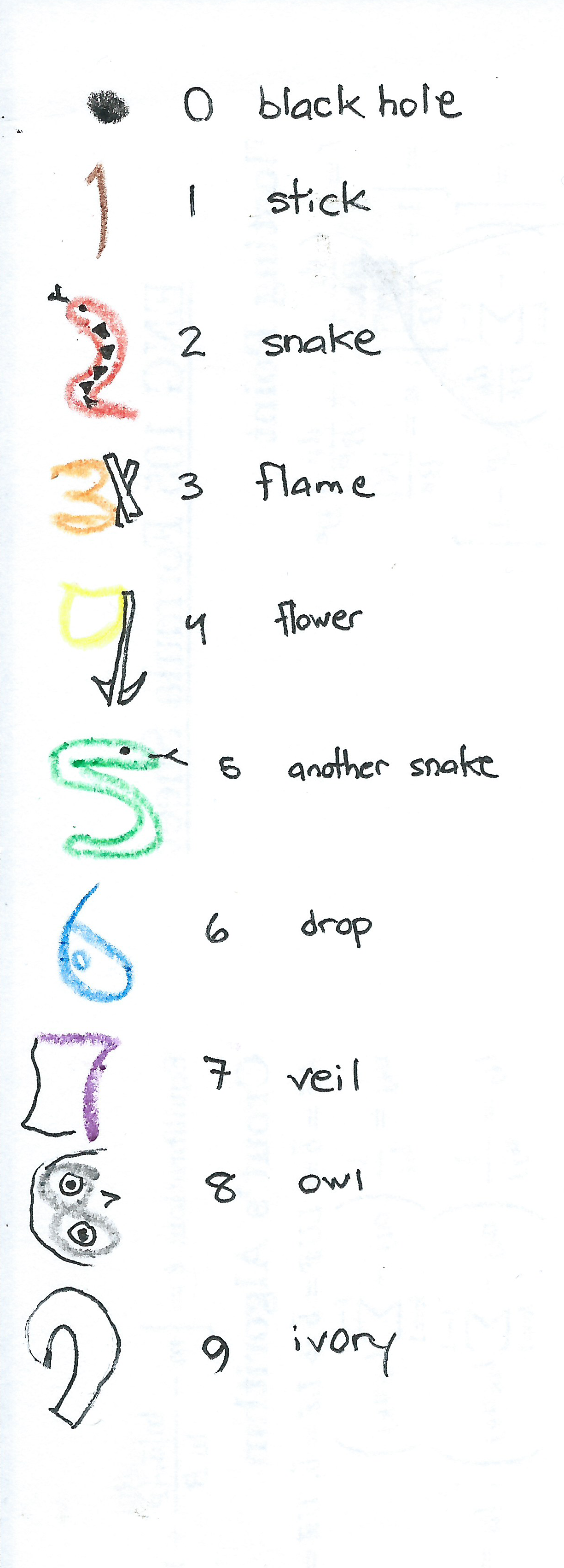Reading Resistor Color Codes
11 Jul 2016 | Miscellaneous, ElectronicsThere are various mnemonics taught to help students remember the resistor color codes, such as:
Better Buy Resistors Or Your Grid Bias Voltages Go West!
among many other silly or offensive ones.
I have always found mnemonics of this type to be mostly useless because they don’t actually help you read the colors into numbers. Best case scenario, you could use the mnemonic to write down the sequence and use that as a key to read the resistances. Otherwise you’d probably have to recite it like the alphabet while counting on your fingers.
A few years ago I wanted a way to easily read a color sequence into a resistance and also convert a resistance into a color sequence so I could both identify and specify resistors instantly. At the time I didn’t find any suitable system on the web, so I developed my own using techniques in adapted from my childhood reading of Martin Gardner’s “Hexaflexagons and Other Mathematical Diversions” and the Mentat Wiki.
Since that time, the technique I developed has been developed by others and is now easily discoverable on Google. Anyway, the basic premise that a color should be bidirectionally associated with a number made me think to develop a striking image that incorporated both the number and color. I ended up developing a number shape system.
For each digit, I identified an object that had its shape that also would be strongly associated with the color. Below, the original crayon drawing I made on the back of some scratch paper:
Unfortunately, there are two snakes of different colors but they are easy enough to remember (and red “comes before” green anyway). The use of a purple veil for seven comes from Martin Gardner’s suggested image for remembering the square root of seven with the phonetic number system:
SHEER LINEN. Seven suggests the dance of seven veils. Think of the veils as made of sheer linen.
My memory may be playing tricks on me, but I always visualized those veils as purple. Come to think of it, the triangles on the square root of three KIMONO were always orange too.
You should use whatever images you find most memorable. This image-association-based technique is a great memory tool for all kinds of things.

